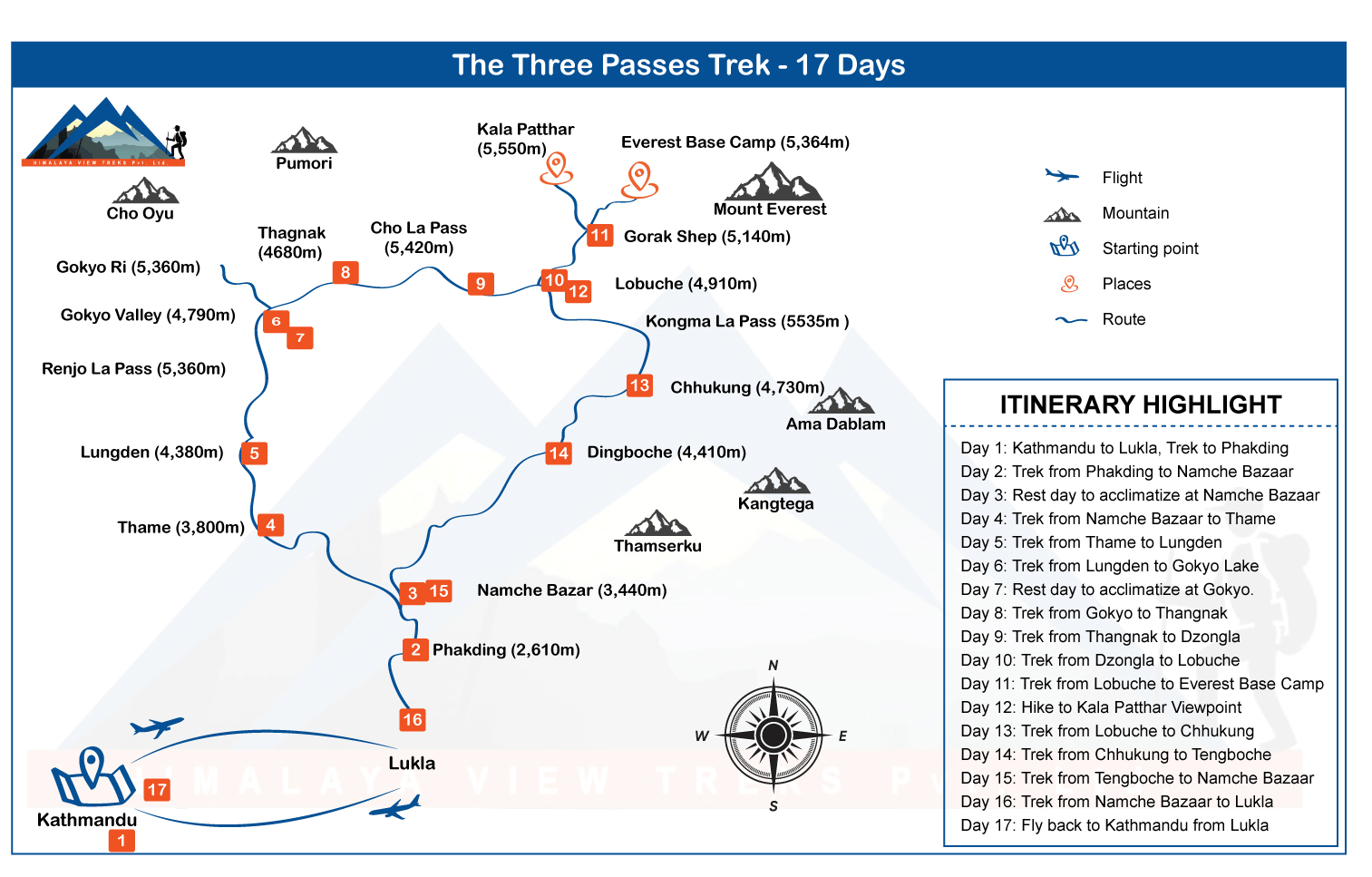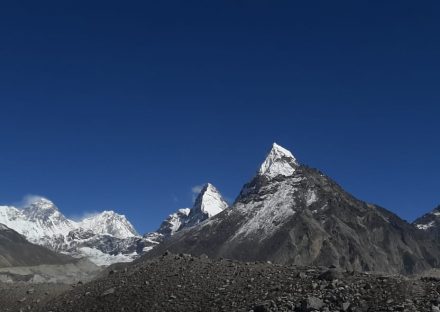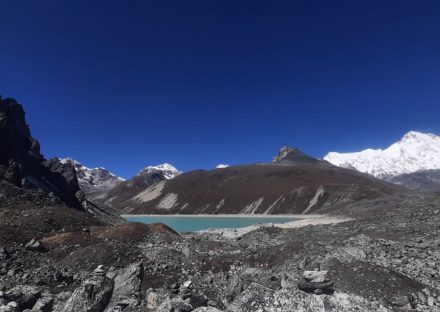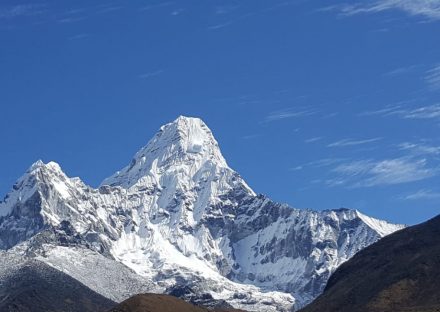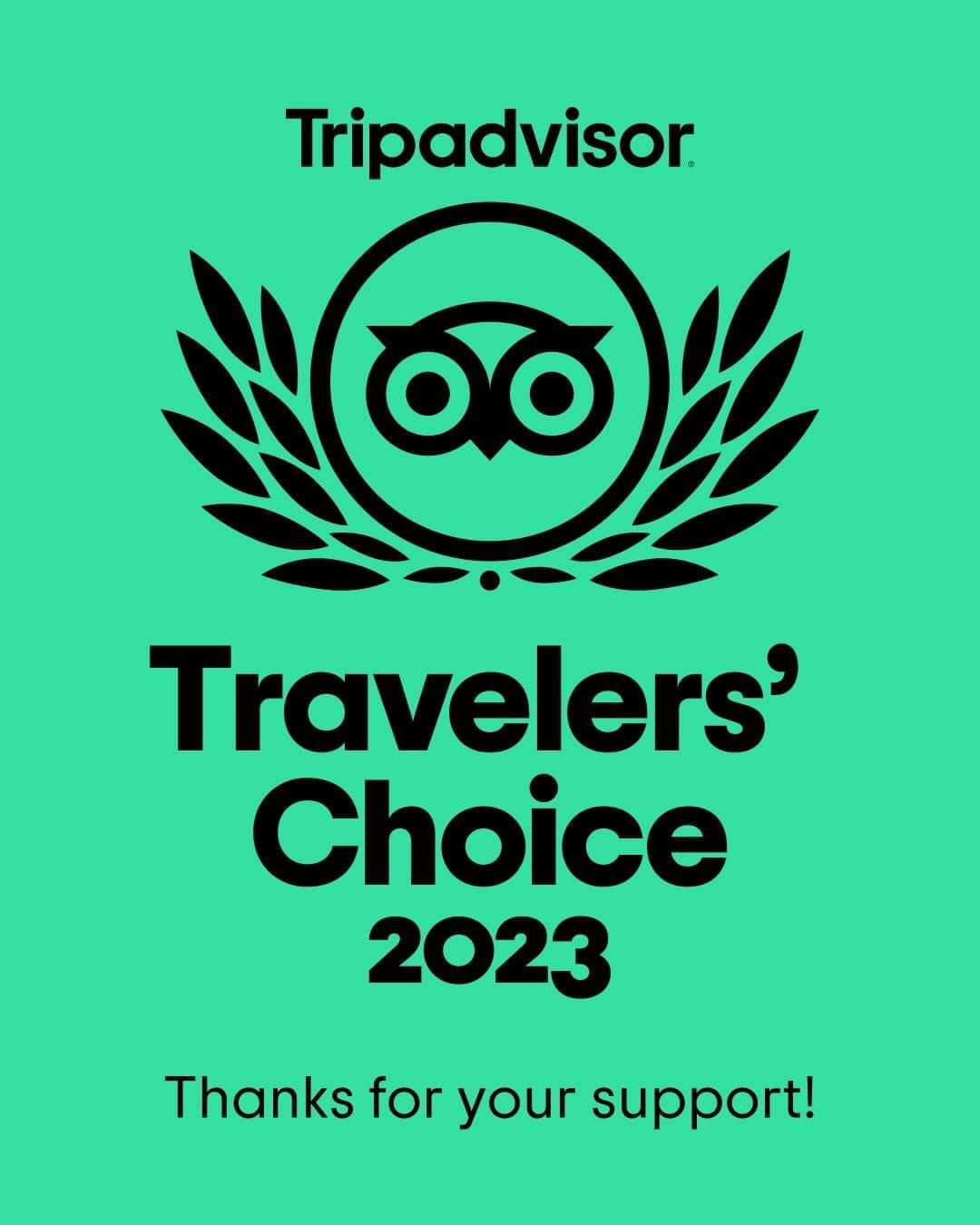- Details
- Short Itinerary
Detailed itinerary
Itinerary- Tour Includes/Excludes
- Useful Info
- Map
- Photos
- FAQ
Trip overview
Everest Three Passes Trek – 17 Days
The Everest Three Passes Trek of 17 days is a typical dream venture into the high & wild in Khumbu Nepal. On a trip like this, it’s not the mountains that we conquer, but ourselves. In other words, Nature will test your mental strength on this journey of natural wonders…
17 Days Everest Three Passes Trek is a one-stop venture into a high alpine country. Likewise, the astonishing scenery we see every step of the way leaves us with heartwarming breathless experiences. This 3 High Passes Everest private trip is for adventure lovers who are up for the challenge on some of the most rugged passes on Earth. However, the rewards offer experiences for a lifetime. That is to say, we also Hike up to Everest base camp and the lovely Gokyo Lakes. Additionally, the Everest three high passes trek 17 days cuts across the less visited 3 high passes.
Renjo La Pass (5340m). Cho La Pass (5420m), and Kongma La Pass (5,535m), known as Everest Three Passes Trek. Complete in 17 Days.
These passes make up the Renjo La Pass (5340m). Cho La Pass (5420m), and Kongma La Pass (5,535m), The climbs we make through Everest Three Passes Trek 17 days Itinerary takes you to summits higher than the Alps. The trip cost catered as a group sizes 2024-2025 with a personal guide. 17 days 3 High pass Trip Itinerary includes general route and minimum required days. The best season is March / April / May and Oct / Nov to Dec.
Challenge yourself in the high passes of the Everest region in Nepal!
The Everest Three High Passes trekking trail generally follows an anti-clockwise or clockwise route. That is to say, the choice of climbing an anti-clockwise path will pose very difficult challenges. However, going clockwise is an easier path via Renjo La Pass. This is the first pass we face which has the lowest altitude among all 3 high passes. The Everest Three Passes trek includes a well-planned itinerary of 17 days that allows you to acclimatize slowly according to your body’s needs. The tough journey begins from Lukla after a short enjoyable scenic flight. Firstly, we hike to the region’s capital town of Namche Bazaar. Secondly, we hike on through the friendly village of Thame, popular among high-altitude climbers. Further on, our climb begins from the beautiful turquoise Gokyo Lakes & the Renjo La Pass.
Visit Everest Base Camp and then be ready for the final high Pass (Kongma La Pass 5535M.)
Once across the pass, we hike from Thagnak & climb to Zhong La via the snow-covered Chola Pass. Hereabouts, we must be careful with wild yak attacks, they can kill if you don’t take care. In addition, we hike to Everest base camp via Khumbu Icefall glacier and face our final challenge to cross the Kongma La Pass.
Moreover, with the punishing tests come the heavenly blessings of nature. You’ll trek to other natural and culturally important places such as Gokyo, and the valley around it. Everest three high passes trek in October is an amazing time to make this trailblazing trip. Hiking up Kalapatthar peak during this particular time leaves you spellbound with beautiful scenery & gripping views of Mt. Everest (Sagarmatha). It’s so close; that you feel you could almost touch it. This is one of the finest mountain journeys you are ever likely to undertake in your lifetime. In this way, your trip will be complete.
Short Itinerary
Everest Three Passes Trek - 17 Days Itinerary
Day 01: Fly to Lukla 30 Minutes (2800m/9156ft and trek to Phakding (walking distance 6 km (2/3 hours) 2640m/8659ft
Day 02: Trek to Namche Bazaar walking distance 7.4 km (6/7 hours) 3440m/11283ft)
Day 03: Rest day in the same place for acclimatization
Day 04: Trek to Thame walking distance 6.8 km (4 hours) 3800m/12464ft
Day 05: Trek to Lungdeng walking distance 8.6 km (5/6 hours) 4600m/15088ft
Day 06: Trek to Gokyo (4760m.15612ft) via Renjo pass walking distance 6/7 hours (5360m/17580ft)
Day 07: Hike to Gokyo Peak walking distance 1.3km (4/5 hours) 5560m/18236ft)
Day 08: Trek to Tangnak walking distance 3.7 km ( 4 hours) 4700m/15416ft
Day 09: Trek to Zhong la via Chola Pass walking distance 9.4km (6/7 hours) 5417m/17767ft
Day 10: Trek to Lobuche walking distance 6.6km (4 hours) 4930m/16170ft
Day 11: Trek to Gorakshep walking distance of 4.5km. (3 hours) 5140m/16859ft) Everest base camp 5346m/17593ft
Day 12: Hike to Kalapattar (5545m/18187ft) and trek back to Lobuche walking distance of 3.9 km (2/3 hours)
Day 13: Cross to Kongma-La (5535m/18154ft) 7 hours walking)
Day 14: Trek back to Tengboche walking distance of 9.1 km (5/6) hours. (3860m/12660ft)
Day 15: Trek back to Namche Bazaar walking distance (5/7 hours) 5.9km. (3440m/11283ft) 6/7
Day 16: Trek back to Lukla walking distance of 13.5 km (6/7 hours) (2800m/9184ft)
Day 17: Fly back to Kathmandu early in the morning around 07:00 AM (35 minutes)
Detailed Itinerary
1. Fly to Lukla and trek to Phagding
Early in the morning the guide will pick you at the hotel and head to domestic terminal for the flight to Lukla. The 35 minutes flight from Kathmandu to Lukla is amazing. It can be termed as the mountain flight as well. You get to see plethora of mountains. The landing at the Tenzing Hillary airport is also the experience to gather. As the airstrip is the world's most extreme airport. We will meet the rest of the crew members in Lukla. After short coffee break, we will start to walk to Phakding. The trail is easy as it traverse through small hamlets, streams, Mani walls and suspension bridges.
2. Trek to Namche Bazar
Trek to Namche Bazaar (3440m.) via Jorsalle, Hillary Bridge adn Top danda to Namche ( 6/7 hours walking) stay overnight at Lodge.
We will start our trek after breakfast. Today's trail is marvelous. We will enter the Sagarmatha National Park in Manjo. There are more than 5 suspension bridges in the trail. The trail is easy to walk on and you will have to cross many suspension bridges. The most interesting suspension bridge to cross is the Twin Hillary bridge at the foothill of Namche Bazaar. We will also get the first glimpse of Mt. Everest today. Just before reaching Namche, you can get an amazing view of Mt. Everest for the first time if weather permits. In the evening you can stroll around the marketplace. Namche Bazaar is the biggest Sherpa town on the Everest Base Camp Trek.
3. Acclimatization day
Acclimatization day, Hike to Everest view hotel (3,880m) and Khumjung village, including Hillary school and hospital
On this day we will do our first acclimatization exercises. Today's main purpose is to reach high altitude and rest in low altitude. You can get the splendid scenery of mountains like Tabuche, Lhotse, Nuptse etc.
After visiting the Sherpa Mountain Museum, we will return back to our teahouse/lodge.
4. Trek to Thame
Trek to Thame (3800m) 4 hours walking, overnight at a lodge, this village is well known by all Everest climbers and the starting point of the three passes trek.
We will leave the main trekking trail of Everest Base Camp and head to Thame. If we trek following the left trail, we will reach to Everest Base Camp but right trekking trail takes us to Thame. For about 4 hours we trek on the trail starting from the right side of Namche Bazaar.
Thame village is the best village of Sherpa people. The village is known as the society of Everest Summitteers. Therefore, you can get to hear lots of mountaineering stories during stay in Thame village.
5. Trek to Lumde
Trek to Lumde (Lungdeng) (4600m) 5/6 hours walking) stay overnight at Lodge.
We will continue our trekking after breakfast. On this day we will trek to Lumde. It is the best day to observe surrounding Khumbu landscape as well as Sherpa culture & rituals.
6. Cross Renjo la pass to Gokyo
Finally, today is the day to cross the first high pass in our three high passes trek journey. It takes about 6-7 hours to cross the pass. From the top of the pass, we can see mountains like Everest, Choyou, Lhotse and Makalu. These mountains are within the top ten mountainsof the world. The final destination on this day is Gokyo Lake area. Enjoy your strolling on the shores of the lake and get the picturesque vibes today. Relish the chance to experience the blue turquoise lake and peaceful Sherpa hamlets.
Trek to Gokyo (4760m.) via Renjo pass (5435) 6 hours walking) stay overnight at Gokyo.
7. Hike to Gokyo Ri
It is a spare rest day. However you can hike to Gokyo Ri and get the outstanding 360 degree view of mountains. Visit Gokyo Ri (Gokyo Peak 5560m.) in the morning (4 ½ hours walking) for sunrise view and all-mountain views, from here we able to see 4 mountains more than eight thousand meters high. Mt. Everest, Mt. Makalu, Mt, Lhotse and Mt Cho yo. Hike back to Gokyo and stay overnight at same Lodge.
8. Trek to Thagnak
Trek to Tangnak ( 4700m. via Gokyo Ngozumpa glacier, 5 hours walk, overnight at the lodge in Thagnak
After breakfast, we will continue our trekking to Thagnak. The trail is over the rugged rocky terrain in the Ngozumba glacier. We will rest and relax as tomorrow early in the morning we will have to cross the Chola Pass.
9. Chola Pass to Zhong La
Trek to Zhong la via Chola Pass (5320m. 6/7 hours walking) stay overnight at lodge
In the wee hours, we will start the trekking. We will take the packed breakfast. It is necessary to walk the trail as early as possible. From the top of Chola Pass, we will be able to see panoramic view of mountains. The landscape is amazing. You can get the best pictures from the top. Heed the instructions of the guide while descending to Zhong La. Rest and relax in the evening.
10. Trek to Lobuche
Easy day, Trek to Lobuche (4930m. 4 hours walking) stay overnight at Lodge.
Today is an easy day to walk. We will casually walk on the trail enjoying the view of mountains to Lobuche. Evening in Lobuche is peaceful and you can get the best view of Mt. Pumori and Lobuche.
11. Trek to Gorakshep
Trek to Gorakshep ( 5140m. 3-hour walking, same day visit to Everest base camp and back to Gorakshep, overnight at Lodge,
Today, we will reach the Everest Base Camp. Early in the morning, we will walk on the moraine and glacier to Gorakshep. After checking in at the lodge, we will hike to Everest Base Camp. Enjoy your time being at the base camp of the world's tallest mountain Mt. Everest. After exploring the base camp area, we will return back to Gorakshep for overnight stay.
12. Hike to Kalapathar and trek back to Labuche
Visit Kalapattar (5545m.) Early in the morning for the best Everest view and then trek back to Lobuche (5 hours walking stay Overnight at lodge.
In the wee hours, we will hike to the top of Kalapathar. You will have to follow the instructions of the guide. It is still dark as we are hiking to the top of the hill for sunrise. The sunrise from the top is splendid. You can get the best view of Mt. Pumori and Mt. Everest. After returning back from the top, we will have breakfast and retrace back to Lobuche.
13. Cross to Kongma-La (5535m)
Cross to Kongma-La (5535m) 7 hours walking) stay overnight at Lodge in Dingboche.
Early in the morning, we will start to trek towards the top of the Kong Ma La Pass. At first we will trek on the glacier and trek uphill to the top. The trail is narrow and rugged. Always heed the instructions of the trekking guide. Don't wander on your own. There are many crevasses and vertical trails. Don't trek on your own. Upon crossing the pass we will reach Chhukung. If time permits, we will trek further to Dingboche for the overnight sleep.
14. Trek back to Tengboche
Trek back to Tyangboche (3860m) 5 hours walking) and stay overnight at Lodge.
The return trek in any trekking trails is amazing as the altitude decreases, air density to increases. It makes easier to breathe and enjoy the surrounding scenery. We will explore the monastery in the evening. Enjoy the view of Mt. Amadablam, Pangboche Valley and Namche Valley from the top of the Tengboche.
15. Trek back to Namche
Trek back to Namche Bazaar (3440m. 6/7 hours walking) and stay overnight at Lodge.
We will have to trek downhill to Phungi Thanga and again climb uphill to Kyangjuma. The trail traverses through green lush forests. Upon reaching the Namche Bazaar we will complete the circumambulation of the Khumbu circuit.
16. Trek Back to Lukla
Trek back to Lukla ( 2800m. 7/8 hours walking) and overnight at Lodge.
We will trek through Manjo and Phakding to Lukla. In the evening we will bid farewell to our crew members. We will also celebrate our trek success.
17. Fly back to Kathmandu
Fly back to Kathmandu early in the morning around 07:00 AM (35 minutes) overnight at your own hotel.
We will fly back to Kathmandu. The guide will take you back to your own hotel. In the evening the agency will host the farewell dinner at the Nepalese style cultural restaurant. We will discuss the trip feedback as well.
Included
- Airport pickup and drop as per client’s arrival and departure date
- Hotel- domestic airport- hotel by car/ van, depend on group sizes
- Domestic flights (Kathmandu - Lukla - Kathmandu) tickets including airport taxes
- All meals (Breakfast, lunch, and dinner) during your Everest Three passes Trek
- 16 nights Hotel Accommodation during Everest Three passes Trek
- Government licensed holder, fluent English Speaking, Familiar HVT guide
- One assistant guide if Group sizes is more than 10 trekkers)
- Strong local Porters for Carry trekker’s luggage One porter every 2 trekkers
- Guide and porter wages including their meals, accommodation, and Salary
- Staff insurance including medication coverage
- Guide and Assistance both ways Lukla flight Ticket
- Equipment for the Company staff
- Water purification drop or tablets for safe drinking water
- Sagarmatha National Park entry permit fee
- Khumbu Pashang Lhamu Rural Municipality permits fees
- Seasonal fresh fruits every day during Everest Three passes trek
- Oximeter to measure Pulse and oxygen level
- Company T-shirt as a Souvenirs, and duffle bag if needed
- Local government, taxes, including official Service Charge
- Trip completion Certificate
Not Included
- Hotel accommodation and meals In Kathmandu
- Personal expense (shopping, snacks, boil bottle water, hot (tea, coffee) and cold drinks, hot shower, alcohol, Wi-Fi, telephone call, battery charge fee during the Everest three passes Trek)
- Personal clothing and trekking gear
- Personal travel insurance including evacuation coverage (compulsory) up to 6000m)
- Additional costs if delays flights and outside the itinerary
- All the costs and expenses which are not mentioned in includes list
- Tips for guide and porters. in end of the treks
Useful Info
Three High Passes Everest Trek Highlights:
- Complete five fabulous peaks all over 5,000 meters: the passes of Renjo La, Cho La, and Kongma La, and the summits of Gokyo Ri and Kalapathar
- Trek in the more virgin valleys of the Khumbu while approaching the Renjo La and Chukhung
- View Everest, Makalu, Lhotse, and Cholatse, the Himalayan giants, in their astonishing glory. The 3 high passes are all about guts & glory.
- It’s a great opportunity to ascend Gokyo Ri and relish grandstand views of Gokyo Lake, Gokyo Valley, and surrounding mountains.
General Information Vital to Everest High Passes Trek:
Best Season for Everest 3 Passes Trek.
Doing this trek/climb at the right time is very important to the success of a trip of this kind. Spring (March-May) and autumn (September-October-November-December) are the best seasons to do this trek. The monsoon season (June - early September) has less predictable weather, but some trekkers still choose this time as it aligns better with their vacation schedule. The Winter season (December - February) gets pretty cold, and snow may block the passes, but often offers clear skies. Nonetheless, we suggest our guests make bookings for this venture in the spring or autumn, especially in the autumn of September/October. The weather is at its best for this high-altitude trip. The views are crystal clear with sparkling blue skies & the finest weather you could ever imagine.
The three passes trek is rated “Challenging”. It is a very arduous adventure given its high pass crossings. This venture is more challenging than its sibling treks Everest Base Camp and Gokyo Lakes, but not as much challenging as trekking peaks such as Island Peak and Mera Peak. Nevertheless, doing this trip requires really good physical fitness & previous experience trekking above 4500m.
Accommodation & Meals During the Everest high Passes Trek
The Everest Region has admirable infrastructure for trekkers. The teahouses (lodges) are of relatively high quality and they serve good meals, especially in Namche Bazar which you’ll pass on the way up and down.
Variations
Generally, it’s best to complete the Three Passes trek counter-clockwise. It is possible to go clockwise, as well, but not recommended due to the steep altitude gain of crossing the Renjo La, first. From Gokyo, you can also add an extra day to visit the remote Gokyo Lakes farther up the glacial valley. However, whichever way you start, there’s an altitude to gain on all 3 high passes.
Will I need travel insurance for the Three Passes trip?
It’s mandatory and highly recommended to get travel insurance before embarking on any adventurous trips in Nepal.
We advise all our clients to get travel insurance that covers emergency helicopter evacuation that may be needed in case of the occurrence of AMS (Acute Mountain Sickness) or any other reasons in high altitudes where there are no other means of transportation available. It is advisable to review carefully the insurance and its coverage before making the final decision. Carry proof of your insurance with you on the holiday and leave a copy next to your skin. You must ensure that your insurance provides an adequate level of protection and covers you well for the activities involved. Personal basic first aid items are required.
Equipment list for High Passes Trekking in Nepal
This section is intended to provide information on clothing and equipment requirements for Nepal Trek. It is not intended to be a final and authoritative checklist. For those who would like a more detailed discussion of these issues, we ask you to contact us at singbir@yahoo.com or via WhatsApp at +9779841146306
The following is a list of clothing and accessories that we recommend that you take with you. This is not intended to be a comprehensive clothing and equipment list, rather it is intended to act as a reminder of those items that we feel are essential for your comfort and convenience. However, we recommend that you may have your personal preferences for clothing which may be equally as suitable.
Footwear: Equipment
1. Walking boots with suitable ankle support that have been worn before the trek, and which are waterproof
2. Trainer or casual shoes, for trekking and/or traveling
3. Warm socks for colder areas
4. Gaiters, in case of rain or snow
Legwear
1. Loose, casual trousers for trekking
2. Thermal leggings for colder areas
3. Long skirt for women as an alternative to trousers
4. Waterproof trousers
Body
1. Selection of T-shirts, and long-sleeved shirts, preferably not cotton
2. Thermal shirt for colder areas
3. Warm shirt, possibly fleece, for colder areas
4. Fleece jacket or warm wool jumper
5. Windproof, waterproof outer shell garment for higher altitudes
6. Down jacket (optional for cold nights & mornings; can be hired in Kathmandu cheaply)
Head / Hands
1. Wool or fleece hat, or balaclava
2. Hat or cap for sun protection while trekking
3. Sunglasses or goggles
4. Warm gloves
Other Items
1. Strong rucksack or large hold all to be carried by porters
2. Day sack to be carried personally
3. Plastic bags or stuff sacks to store/separate trekking gear inside your main bag
4. One-liter water bottle
5. Personal first aid kit to include essential items
6. Sleeping bag, 4 season
7. Torch, ideally head torch
8. Camera and film! – For those not-to-be-forgotten shots of the Himalayas
9. Toilet items and towel
10. Large handkerchief/bandana for neck
Optional Items
1. Binoculars
2. Books (see Recommended Reading)
3. Altimeter
4. Compass
5. Playing cards/backgammon/chess set
And Finally
The most important things that you must take with you are a sense of humor, an open mind, and an understanding that a trip to Nepal is an adventure to a land that is very different from your own.
Everest 3 Passes Trek Entrance Permit Fee and Tims card fees.
Khumbu Pasang Lhamu Rural Municipality Fee US$20 per person
Sagarmatha National Park(Everest) – RS 3000 plus 13% VAT per person, If you are from SAARC country then RS 1500 plus 13% VAT
TIMS – US$ 20 per person if you are from a SAARC country then US$ 10
Are You Already in Nepal?
If you are already in Kathmandu or Pokhara and seeking to Hire a guide/porter or tour/trekking packages then you can directly contact an expert via WhatsApp at +9779841146306 Or visit our office:- Himalaya View Treks Kaldhara Marg, Kathmandu 44600, in front of the Kathmandu sport climbing center 1st-floor building.
Secure your trip with Himalaya View Treks! Click here to book Everest Three Passes Trek for the upcoming 2024/25 Autumn and spring seasons. Furthermore queries, you can directly contact us via email inquiry at singbir@yahoo.com
FAQs
-
How difficult is the 3 high passes trek?
The Everest High Passes Trek is also known as the Three Passes Trek or Everest Base Camp via Three Passes Trek or High Land of Everest Valley Trek. It is one of the hardest trips that Himalaya View Treks provides to its bold & brave trekkers and adventure-seekers. The journey is known to be a complete circle of high alpine country within the Everest Valley following the treacherous three passes of Renjo La, Cho La and Kongma La before Everest Base Camp visit. The taxing trip is indeed a long walk in remote land, high up in the mountains in the middle of nowhere. For this adventurous trek, you must be very fit and highly experienced in the Himalayas. We highly recommend trekkers and keen hikers to first do the Everest Base Camp Trek or Gokyo Lakes Trek before making a go for this one. Following this adventure pattern could make your issues a lot more comfortable for the 3 high passes. Once you’re done with the high passes, you can graduate for the big time peaks like ‘Island peak or Mera peak’’ & then target the 7 thousanders from there on, if you’re an ardent mountaineer. However, if you are a tested trekker or have already experienced the Kilimanjaro Climb or trekked in the Andes or on the Alps, then you are unquestionably eligible for this one.
-
When is the best time to do the 3 high passes trek?
Everest High Passes Trek is best done in pre-monsoon season i.e. from March to May and post-monsoon season i.e. from late September to December. It is also possible to do this trek in February and early September but the trek is best preferred in early autumn. September/October would be ideal & wonderful.
-
Is my trip departure guaranteed?
Absolutely yes! Under normal circumstances, our booked trips are guaranteed to run. You will still be doing your trek even if other trekkers cancel their trip. This is the reason why Himalaya View Treks is small but highly dependable; we’re somewhat different from other agencies, who usually cancel their whole trip a month or even a week before the trip date. We are a tailor-made outfit and the number of participants does not stop our operation. If your trip has been canceled by your operator and you are on a last-minute stress mode, remember to find us to sort out your trip decisions. Please feel free to book your stress-free holidays with us. Unless there is a situation which is beyond our control i.e. a political riot, natural disasters, pandemics, epidemics or weather catastrophes affecting one & all, our trips are 100% guaranteed to run.
-
If I cancel my trip, will I get a refund?
Himalaya View Treks offers a lifetime deposit policy which allows you the flexibility to transfer your deposit to anyone or any other trip. If you wish to cancel your booked trips, certain cancelation charges apply. Please visit our booking terms and conditions for detailed information.
-
Who are my guides, are they experienced enough for such a trip?
You will be guided by our experienced trek leaders who have been to the Three Passes and back multiple times for years. All our guides are locals who communicate very well in English and possess deep knowledge of the mountains, people, culture, health, hygiene, and most importantly, your safety. They give more priority to your life than their own. Our guides simply enjoy what they do; it’s their only means of survival.
-
Where will I sleep at nights for a high altitude trek like this?
After a long day’s hike, a relaxing night of comfortable sleep is very much vital for the next day’s walk. Taking your comfort into account, we make sure to book the best lodge with two beds in each room and western toilet facilities wherever available. Normally, the beds are clean and comfortable with an electric blanket (upon availability) and attached bathrooms for most nights. The room’s temperature is usually maintained at 10-12°C / 50-54°F. We’ve learnt a long time ago on our ceaseless trips to the mountains that a comfortable night is so important to you enjoying the next day.


